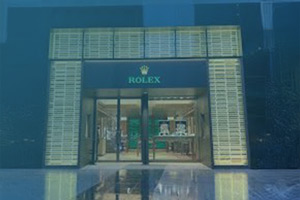Melbourne Retail Market Mid 2017
July 5th 2017 | , Urban Property Australia
Whilst consumers appear to be cautious and retailers continue to struggle, investor appetite for retail assets remain undiminished. Disruption within the retail sector is gaining momentum as the likes of Amazon and Kaufland establish operations which will require domestic retailers to continue to innovate to remain relevant.
Sales Activity
The 12 months to July 2017 marked another very active year for the Australian retail investment market. Total transactions reached $7 billion with 2016/17 the fifth consecutive year that volumes exceeded $5.0 billion, a level only reached once before.
Offshore investors continue to lead buyers with CBD and sub-regional shopping centre opportunities of particular focus. Yields continue to compress as investors gradually reset return expectations to reflect a lower growth and lower return environment.
Within the CBD retail market specifically, sales volumes fell in the year to July 2017 compared with previous 12 months, impacted by a scarcity of investment opportunities. JP Morgan Asset Management’s acquisition of St Collins Lane for $247 million was the largest Melbourne CBD retail transaction in 10 years. Prime yields for freehold retail assets (excluding shopping centres and arcades) range between 3.5% and 4.0% whilst prime yields for strata retail assets range between 4.0% and 5.0%.
Looking ahead, the volume of retail transactions across retail asset classes could reach a new record high in 2017, driven by some major individual assets and portfolios. There continues to be significant demand from major offshore investors to build scale in the traditionally tightly held retail sector.

Retail Trade
Retail sales bounced back in April 2017, rising 1% over the month. Over the year to April 2017, retail sales accelerated to 3.1%, the strongest annual growth rate since October 2016. Interestingly, retail sales in New South Wales recorded annual retail sales of 2.6%, the slowest annual rate of growth since July 2013. Victoria (4.2%), Queensland (4.1%), South Australia (4.0%), Tasmania (2.8%) and ACT (3.7%) all recorded stronger annual retail sales growth.
Food, department stores and sales at cafes, restaurants and take away stores all bounced back strongly in April, more than reversing the falls the previous month. However, sales of clothing and household goods remained weak, with sales up just 0.3% and 0.7%, respectively, in the year to April 2017.
Encouragingly, sales at large stores rose a solid 1.5% in April, having been flat in both February and March. In contrast, sales at small stores have now fallen for six consecutive months.
Australian consumers have spent approximately $22.37 billion in the 12 months to April 2017, accounting for around 7.3% of spending at traditional “bricks & mortar” retailers over the year. According to the National Australia Bank, online retail sales fell by 0.8% in April, with online sales for the year to April 2017 up by 6.9%. Domestic online sales grew by 9.1% over the year in comparison to international online sales growth of 8.7%. Domestic online sales account for 80% of all online purchases made by Australian consumers over the year.
Looking forward, the retail sector facing a variety of challenges with households more cautious about their personal finances amid weak wage growth, high household debt, slowing house price growth as well as rising energy bills.

Retail Strip Market
Total vacancy across Melbourne’s prime retail strips remains elevated, increasing to 8.4% despite Victoria’s nation-leading population growth. The overall vacancy rate rose from 7.0% to 8.4% over the year to July 2017. Of all of Melbourne’s prime retail strips, only the vacancy rate of Toorak Road, South Yarra sits below its long-term average. Over the year to July 2017, only Burke Road, Camberwell; High Street, Armadale along with Toorak Road recorded decreases in vacancy. As has been the case since 2012, the vacancy rate of Bridge Road, Richmond remains highest amongst the prime retail strips with the current vacancy sitting at 18%.
Tenant demand for Melbourne’s retail strips has been driven by food-based retailers and service retailing occupants boosted by the population growth that has resulted from the number of apartments recently completed close to the popular shopping precincts.
Private investors continue to dominate retail strip sales activity despite the soft retail trading conditions. Investment demand for strip retail assets remains intense with transactions demonstrating yields between 3.5% and 4.5% steady for the year.
Rising population is expected to boost retail trade and lower vacancy rates in the medium term. Looking ahead, rents are expected to stabilise over the short term with vacancy plateauing and landlords gradually adapting to achievable rents.
CBD Retail Market
Melbourne CBD-based employment and residential population growth continues to underpin demand for CBD retail space from both domestic and international retailers. The CBD residential population has increased by 15% to reach 35,447 over the three years to June 2016 while white collar employment in the CBD increased by 5% to reach 284,677 over the same period.
As at July 2017, Melbourne’s CBD retail vacancy rose to 3.0% up from 2.0% a year earlier with premises offering street frontage recording an increase in vacancy in contrast to shopping centre stores which saw vacancies fall. Over the year, most of the incoming tenants into the Melbourne CBD comprised occupiers from food retailing and clothing sectors, boosted by the new residents of the CBD.
As total inbound tourism numbers for Victoria continue increase (2.5 million as at December 2016) international retailers have also be attracted to the CBD, doubling in number over the five years to July 2017. International retailers who have recently opened stores in the Melbourne CBD include: JD Sports, Cartier and Sandro while British-based retailers Debenhams and Burberry have new premises scheduled to open in the second half of 2017.
Major new retail supply within the CBD retail is limited in 2017 with only the refurbishment of Emirates House, located between Swanston and Elizabeth Streets, scheduled for completion in September 2017.



